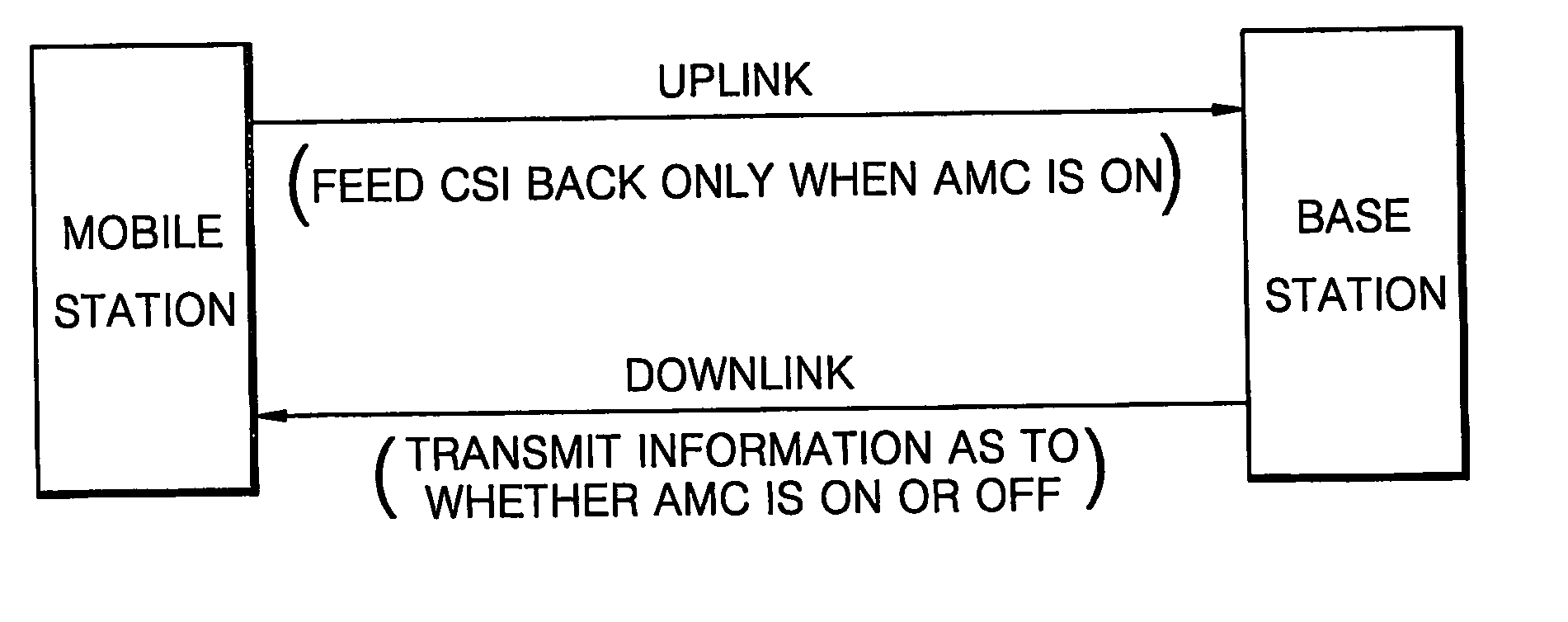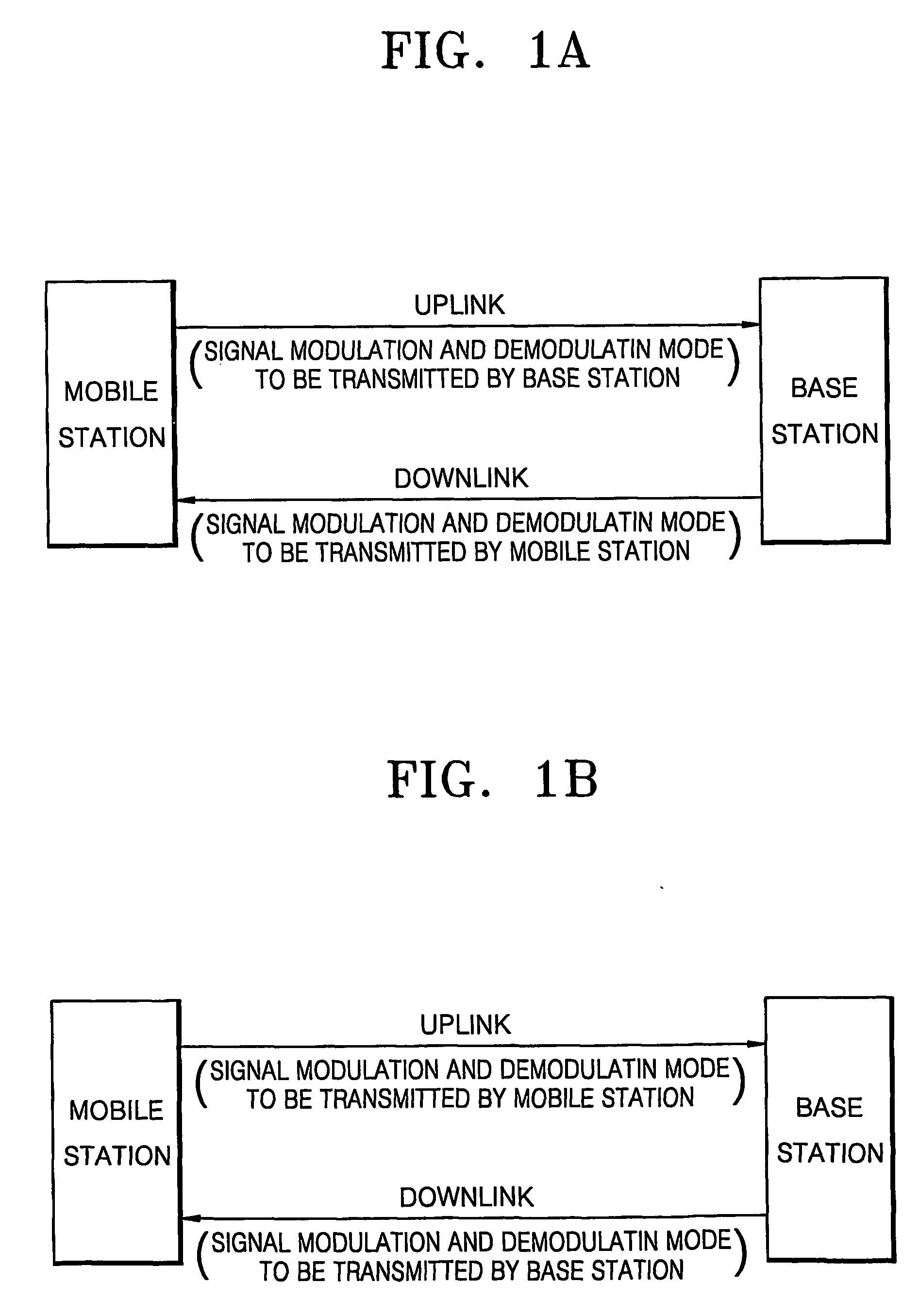Method of reducing feedback channel state information within adaptive ofdma system and adaptive ofdma system using the same
- Summary
- Abstract
- Description
- Claims
- Application Information
AI Technical Summary
Benefits of technology
Problems solved by technology
Method used
Image
Examples
Embodiment Construction
[0028]FIG. 1A is a block diagram for explaining a scenario of adaptive modulation and demodulation when an FDD is used, and FIG. 1B is a block diagram for explaining a scenario of adaptive modulation and demodulation when a TDD is used.
[0029] Referring to FIGS. 1A and 1B, an MS measures the state of data downlink and requests a transmitter of a base station (BS) to transmit data in a transmission mode according to the state of downlink. The BS measures the state of uplink and requests a transmitter of the MS to transmit data in a transmission mode according to the state of uplink.
[0030] As shown in FIG. 1A, when the FDD is used, an uplink is used for signaling a modulation and demodulation mode to be used for a transmission by the BS, and a downlink is used for signaling a modulation and demodulation mode to be used for a transmission by the MS.
[0031] Referring to FIG. 1B, when the TDD is used, the uplink is used for signaling a modulation and demodulation mode to be used for a t...
PUM
 Login to View More
Login to View More Abstract
Description
Claims
Application Information
 Login to View More
Login to View More - R&D
- Intellectual Property
- Life Sciences
- Materials
- Tech Scout
- Unparalleled Data Quality
- Higher Quality Content
- 60% Fewer Hallucinations
Browse by: Latest US Patents, China's latest patents, Technical Efficacy Thesaurus, Application Domain, Technology Topic, Popular Technical Reports.
© 2025 PatSnap. All rights reserved.Legal|Privacy policy|Modern Slavery Act Transparency Statement|Sitemap|About US| Contact US: help@patsnap.com



